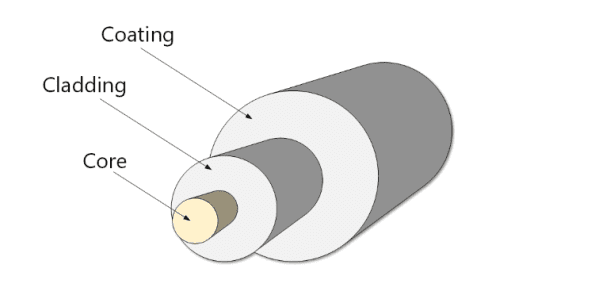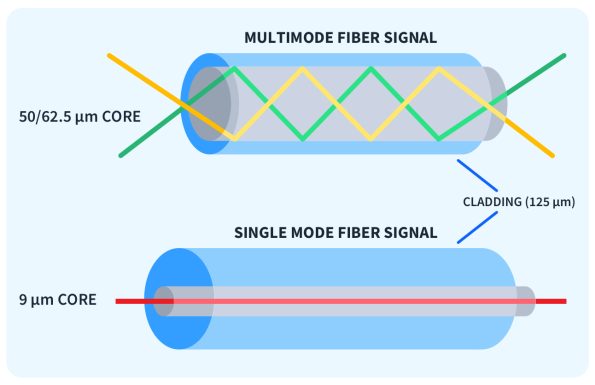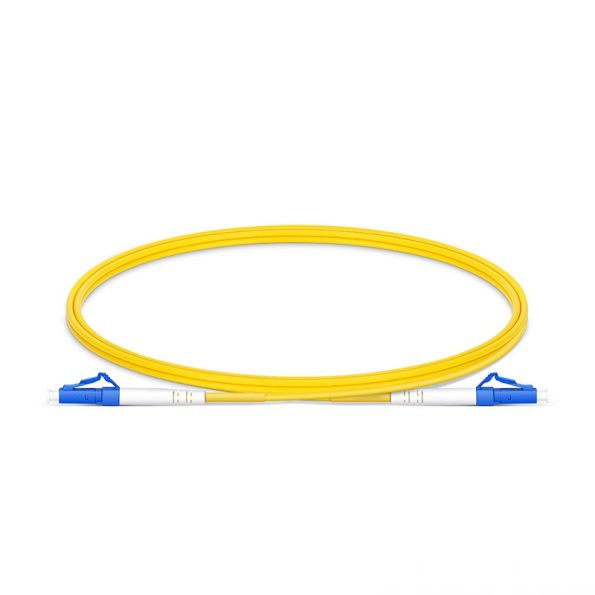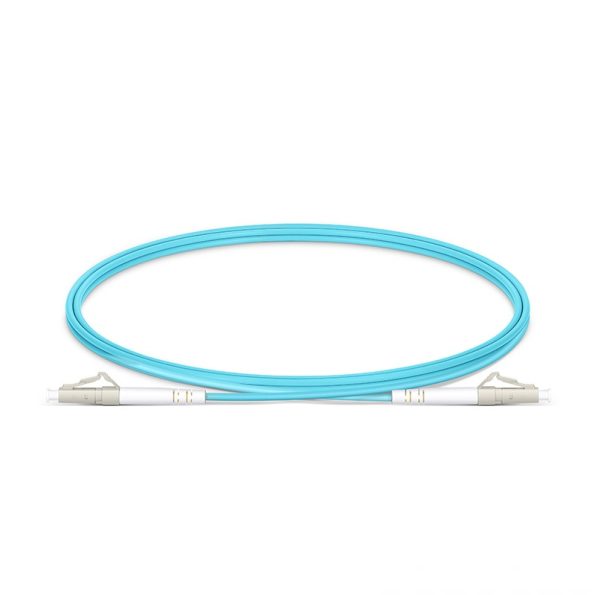Summary:
A journey through the heart of optical communication unveils the exceptional properties of single and multimode fibers, crafted from glass with distinctive refractive indexes. This exploration delves into their core and cladding composition, their protective layers, and the pivotal role they play in modern data transmission.
Content:
The Basic Structure of Optical Fibers
The fundamental anatomy of an optical fiber is a testament to its robustness and precision. It is typically composed of three concentric layers: the core, the cladding, and the protective coating.

Composition and Function
The core and cladding of an optical fiber are crafted from glass with exceptional refractive properties. The core, an exquisitely crafted germanium-doped silica, boasts a higher refractive index, while the cladding, a pure silica glass with a marginally lower refractive index, serves as a guiding barrier. Light enters the fiber at a specific angle of incidence, initiating total internal reflection between the fiber and the cladding, thus enabling its propagation.
The Protective Coating
The coating’s primary role is to shield the optical fiber from external threats, enhancing its flexibility and durability. Given the fragile nature of glass, the coating layer acts as a guardian, extending the fiber’s lifespan and ensuring its resilience.
Outer Sheath
For non-naked fibers, an outer sheath is introduced, serving a dual purpose of protection and identification through its distinctive colorings, allowing for the organization of multiple optical fibers.
Transmission Modes: Singlemode vs. Multimode
Optical fibers are categorized into singlemode and multimode based on their transmission characteristics. In singlemode fibers, the small core diameter permits only one path of light to propagate, while multimode fibers, with their larger core, accommodate multiple light paths at various incident angles.

Transmission Characteristics: Loss and Dispersion
The performance of optical fibers is governed by two key transmission characteristics: loss and dispersion. Loss, measured in dB/km, is the reduction in signal strength along the fiber’s length, directly impacting the communication range. Dispersion, the phenomenon causing signal distortion due to varying transmission speeds of different frequency components and modes, is categorized into material, waveguide, and modal dispersion.
Singlemode Fiber (SM Fiber)
Singlemode fibers, with their slender core diameters, allow for a singular light path, minimizing modal dispersion and enabling long-distance transmission with minimal signal degradation. Operating at 1310 and 1550 nm wavelengths, these fibers are the backbone of telecommunications and data-intensive applications.
Multimode Fiber (MM Fiber)
Multimode fibers, with core diameters of 50μm or 62.5μm, support a variety of light modes, catering to applications requiring short-distance transmission. The advent of WBMMF (Broadband Multimode Fiber) extends its utility to high-speed data transmission within local networks.
Selecting the Right Fiber for Your Application
The choice between singlemode and multimode fibers hinges on transmission distance, bandwidth, capacity, and cost. Singlemode fibers, with their superior bandwidth and reach, are ideal for long-haul communications, while multimode fibers, with their cost-effectiveness and ease of handling, are preferred for local area networks and high-speed data transmission.
FiberLife: Your Partner in Optical Communication
FiberLife stands as a beacon in the realm of optical communication, offering a diverse range of optical fiber jumpers and passive primary components. Specializing in R&D, manufacturing, sales, and service, FibeLife’s products are the linchpin in fiber to the home, 4G/5G mobile communications, internet data centers, and national defense communications.












